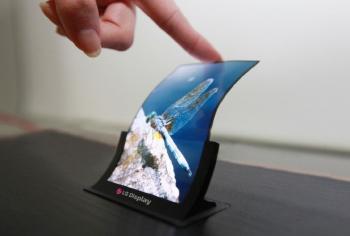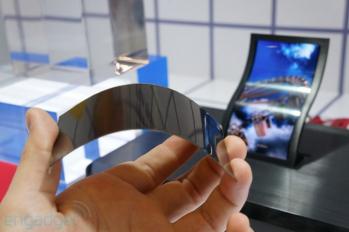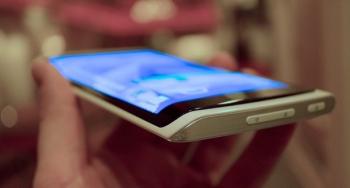LG Display says they expect to start mass producing flexible OLEDs in Q4 2013 and supply them to "major clients". One of these clients is LG Electronics who want to produce the first flexible-OLED phone by the end of 2013.

LGD says that they already completed the development of those displays. As far as we know LG's flexible panels uses polyimide coated substrate and direct-emission RGB sub-pixels (as opposed to LG's OLED TV which use an WRGB technology - white OLEDs with color filters). The first panels won't actually be flexible, but they may be curved. They will also be lighter, thinner and much more durable compared to glass-based OLEDs.

LGD will produce the panels in their E2 line in Paju. This 4.5-Gen line will have a monthly capacity of 12,000 sheets. While this is great news, this volume is not enough for a popular smartphone - so it'll likely end up in premium products. It's likely that the first panel will be the 5" display unveiled at SID 2013 last month.
Samsung is also developing flexible OLEDs, and they officially launched them in January 2013. Those so-called YOUM panels are quite similar to LG's flexible panels. It'll be exciting to watch the two Korean competitors and see who will be the first one to actually offer a product with an unbreakable plastic-based OLED.



Probably will also LGD use amorf polyamide as substrate for this superthin flexible Amoleds
because amorf polyamide pass higher temperature than non amorf polyamide.
And amorf polyamide have another interesting property that it is transparent
so it will be possible to make flexible Amoled displays in future that
can be partially or totally transparent when no current is on each subpixel
or pixels on the flexible Amoled display.
And because of that ITO=Indium-Tenn-Oxide for capacitive touch display
can't atick on plastic substrate and must have glass as substrate.
But graphene stick on plastic substrate and graphene is totally
transparent (mostly because it is only 1 atom thick) it will be
possible to make partially or totally transparent flexible strong Amoled displays.
With graphene as TFT material this superthin Amoleds on flexible substrate
they will also be very strong plastic display even if they will be only
0,2mm thin flexible displays.